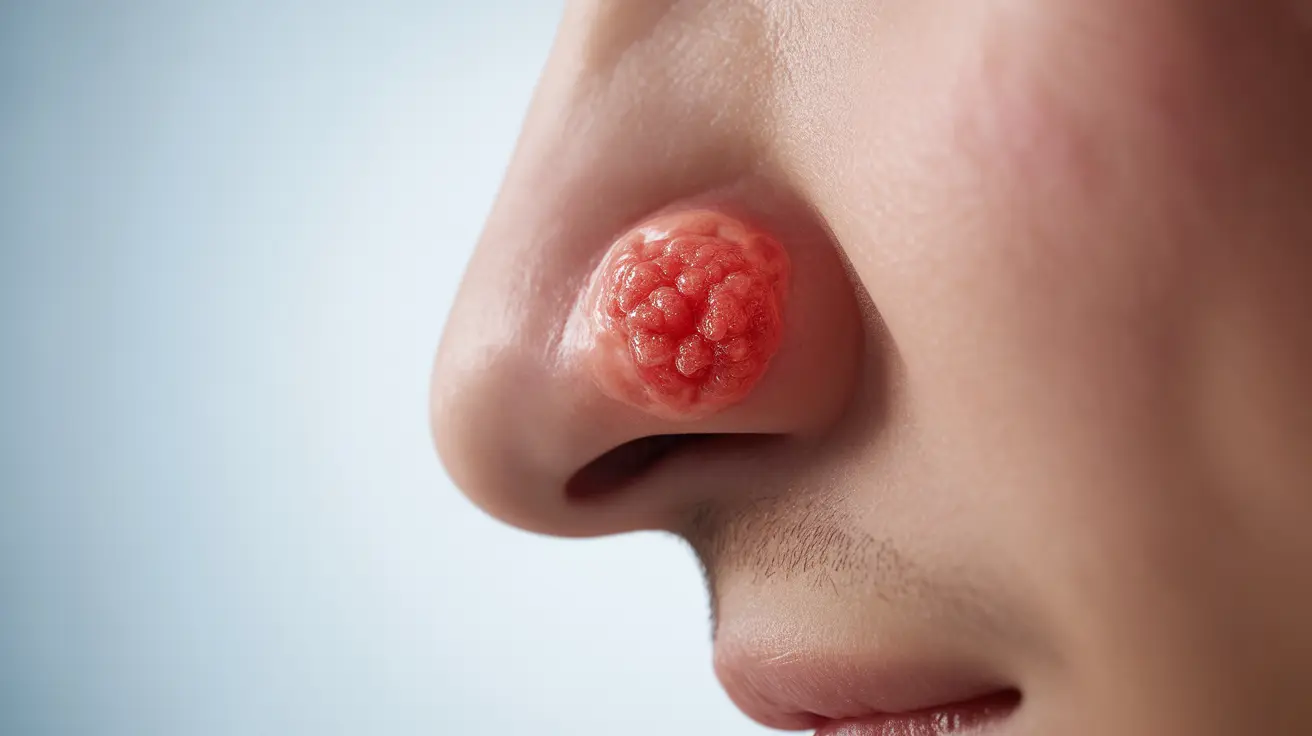A staph infection pimple in the nose can be both uncomfortable and concerning. These bacterial infections, caused by Staphylococcus aureus, commonly occur inside the nasal passages and can range from minor irritations to potentially serious conditions if left untreated. Understanding the causes, symptoms, and treatment options is crucial for managing this condition effectively.
While many people mistake these infections for regular pimples, proper identification and treatment are essential to prevent complications and ensure quick recovery. This comprehensive guide will help you understand everything you need to know about staph infection pimples in the nose.
Understanding Nasal Staph Infections
Staph bacteria naturally live on human skin and in many people's nasal passages without causing problems. However, when there's a break in the skin or when the immune system is compromised, these bacteria can cause infections that appear as pimple-like bumps inside the nose.
Common Causes and Risk Factors
Several factors can increase your risk of developing a staph infection pimple in your nose:
- Frequent nose picking or scratching
- Nasal piercings
- Compromised immune system
- Recent upper respiratory infections
- Poor hand hygiene
- Chronic nose picking
- Close contact with infected individuals
Identifying Symptoms
Recognizing the symptoms of a staph infection in your nose is crucial for early treatment. Common signs include:
- Red, swollen bump inside the nose
- Tenderness and pain
- Warmth around the affected area
- Pus or drainage
- Fever (in more severe cases)
- Spreading redness beyond the initial site
Treatment Options
Medical Treatments
Professional medical treatment may include:
- Topical antibiotics
- Oral antibiotics for more severe infections
- Drainage of larger boils by healthcare providers
- Follow-up care to ensure complete healing
Home Care Measures
While receiving medical treatment, you can support healing by:
- Applying warm compresses to the affected area
- Maintaining good nasal hygiene
- Avoiding touching or picking at the infection
- Using prescribed medications as directed
Prevention Strategies
Preventing staph infection pimples in your nose involves several key practices:
- Regular hand washing with soap and water
- Avoiding nose picking
- Using clean tissues when blowing your nose
- Keeping nasal passages moisturized
- Maintaining a strong immune system
- Using separate towels and personal items
When to Seek Medical Attention
Seek immediate medical care if you experience:
- Severe pain or swelling
- Spreading redness
- Fever
- Multiple infection sites
- Symptoms that worsen despite home care
Frequently Asked Questions
What causes a staph infection pimple inside the nose? A staph infection pimple inside the nose occurs when Staphylococcus bacteria enter through small cuts or breaks in the nasal tissue, often due to nose picking, injuries, or compromised immunity.
What are the common symptoms of a staph infection in the nose? Common symptoms include a red, painful bump or pimple, swelling, tenderness, warmth around the affected area, and possible pus drainage. Some people may also experience fever in more severe cases.
How is a staph infection in the nose diagnosed and treated? Healthcare providers diagnose nasal staph infections through physical examination and sometimes culture tests. Treatment typically involves topical or oral antibiotics, depending on severity, and may require professional drainage of larger infections.
Can nose picking or nose piercing increase my risk of getting a staph infection in the nose? Yes, both nose picking and nose piercing can significantly increase your risk of developing a staph infection by creating small wounds that allow bacteria to enter the tissue.
How can I prevent staph infections from developing in my nose? Prevent nasal staph infections by practicing good hand hygiene, avoiding nose picking, keeping nasal passages clean and moisturized, and maintaining a healthy immune system. Also, avoid sharing personal items that come in contact with your nose.




